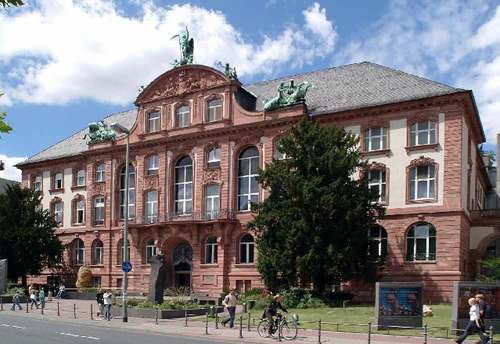Senckenberg Gesellschaft für Naturforschung (SGN)

WHO WE ARE
The Senckenberg Gesellschaft für Naturforschung, established in 1817, is a private society with an international reputation in all fields of natural history research. It runs six research institutes and three museums in Germany with over 500,000 visitors each year. Senckenberg is also custodian of the UNESCO World Heritage Site at Messel and a member of the Leibniz Association. The society has around 750 full-time staff, 150 PhD students and over 500 guest scientists. With 37 million series the scientific collection are among the largest in Europe. Senckenberg runs different high-end laboratories of DNA analysis, isotope analysis, SEM, etc. Senckenberg research covers all fields of biodiversity in marine, freshwater, and terrestrial (including soil) ecosystems worldwide. In all these fields, Senckenberg follows a multidisciplinary approach combining the latest molecular genetics and modelling techniques with experimental studies and integrates research across different scales, ranging from the laboratory to the mesocosm, and to the landscape approach.
WHAT OUR EXPERIENCE IS
Senckenberg has unique long-term biodiversity data from marine, freshwater, and terrestrial (including soil) ecosystems usually covering more than 20 years. With the Rhine-Main-Observatory Senckenberg runs a Long-Term-Ecological-Research (LTER) site, one of the very few LTER-sites focusing on river ecosystems. Senckenberg and one of its institutes, namely the Biodiversity and Climate Research Centre, have outstanding experience in analyzing and modelling long-term ecological data on all levels of biodiversity (gene, species, andecosystem) and in developing sound monitoring systems.
WHAT WE DO IN EU BON
- With the LTER-site, "Rhine-Main-Observatory" (RMO), we provide a central European testing site. Long-term ecological research in the RMO mainly focuses on a Central European river and floodplain ecosystem.
- Analysis of status and trends and in modelling the distribution of biodiversity.
IN EU BON WE MAINLY CONTRIBUTE TO
WE ARE ALSO INVOLVED IN
- BIOTA
- UNDESERT
- MESMA
- EnvEurope
- LOEWE BiK-F
- GIBIF-D
|
|
|





 RSS news
RSS news
 NEWS
NEWS CALENDAR
CALENDAR